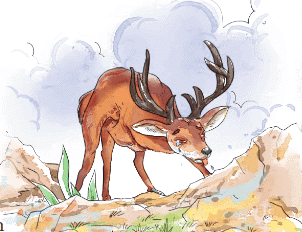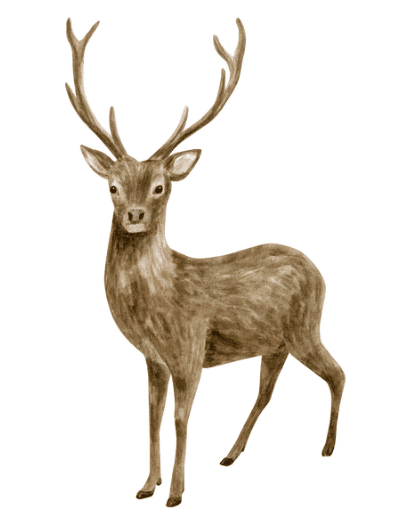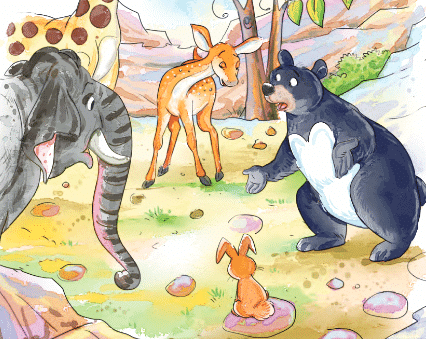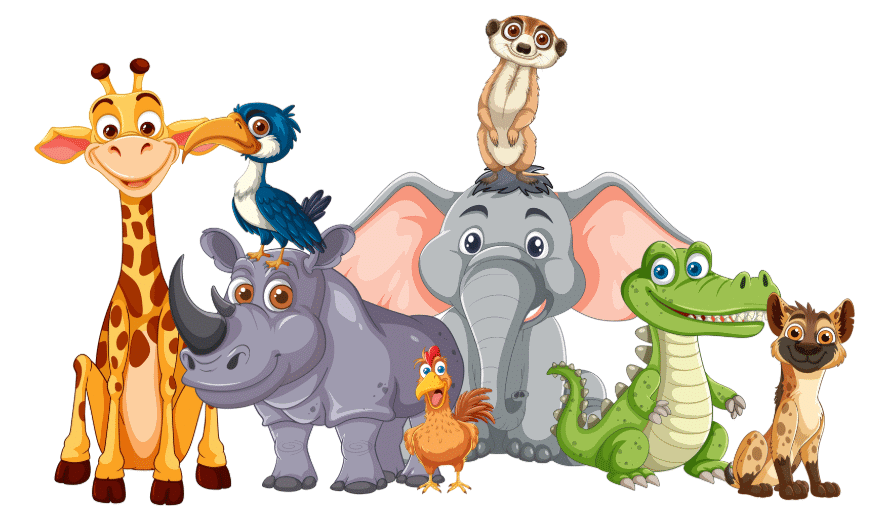Class 4 English Short Answer Questions Chapter 5 The Old Stag
Q1. Where did the old stag like to stay?
Answer: The old stag liked to stay on a small hillock with tender, green grass.
Q2. Why did the old stag fall ill?
Answer: The old stag fell ill because he could not reach the hillock to eat the tender grass.
Q3. What did the animals do when they learned the stag was unwell?
Answer: The animals came to check on the stag and wished him a speedy recovery.

Q4. What made the animals feel ashamed?
Answer: The animals felt ashamed because they ate all the grass meant for the stag, leaving him with none.
Q5. What lesson did the animals learn from the stag’s illness?
Answer: The animals learned that nature has enough for everyone, but they must use resources wisely.
Q6. Why did the stag like to stay on the hillock with tender grass?
Answer: The stag liked staying on the hillock because the grass was soft and fresh. It provided him with the best food, which kept him healthy and happy. Even though there was plenty of food in the forest, the stag preferred the tender grass on the hillock because it was comfortable and satisfying.
Q7. What happened when the animals visited the stag while he was ill?
Answer: When the animals visited the stag while he was ill, they were concerned for him. They wished him a speedy recovery, but they also ate the tender grass growing on the hillock. Although they wanted to help, their actions showed their greed, as they consumed the grass, leaving the stag with very little to eat.

Q8. How did the animals feel after they realized their mistake?
Answer: After realizing their mistake, the animals felt ashamed of themselves. They understood that their greed for the tender grass had harmed their friend, the old stag. They regretted not thinking about how their actions affected the stag’s recovery. They decided to find food elsewhere in the forest and stop disturbing the hillock.
Q9. What did the animals do to help the stag after realizing their mistake?
Answer: After realizing their mistake, the animals decided to bring fresh leaves from other parts of the forest for the stag. They also stopped eating the grass on the hillock. This allowed the grass to grow back, and the stag had enough food to recover. Their actions showed that they cared about the stag’s well-being.
Q10. How did the rain help the stag?
Answer: The rain helped the stag by making the grass on the hillock grow back. Once the grass was restored, the stag had enough food to eat again. The rain provided the much-needed nourishment for the grass, allowing the stag to regain his strength and recover from his illness.
Q11. What did the stag do after he recovered from his illness?
Answer: After the stag recovered from his illness, he was able to come down from the hillock again. He felt strong and healthy thanks to the fresh grass and care from his friends. The stag resumed his usual routine of greeting his fellow animals and birds, showing that he had fully recovered.

Q12. What role did the animals’ greed play in the stag’s illness?
Answer: The animals’ greed played a major role in the stag’s illness. They ate all the tender grass on the hillock, leaving none for the stag. This made it difficult for him to recover, as the fresh grass was essential for his health. The animals’ actions slowed down his recovery and made them realize the consequences of greed.
Q13. What did the animals learn from the stag’s experience?
Answer: The animals learned an important lesson from the stag’s experience: that nature has enough resources for everyone, but they must use them wisely. They realized that their actions of greed could hurt their friends and the environment. They learned to respect nature and be mindful of how they used its resources to ensure everyone’s well-being.
Q14. Why is it important to use natural resources wisely?
Answer: It is important to use natural resources wisely because they are limited and valuable. Overusing or misusing them, like the animals did with the tender grass, can cause harm to others, as well as to the environment. Using resources wisely ensures that everyone benefits and that future generations can also enjoy them.

Q15. How did the stag’s story teach the animals about caring for others?
Answer: The stag’s story taught the animals the importance of caring for others. They learned that by being mindful of the stag’s needs and not being greedy, they could have helped him recover faster. The stag’s illness reminded them that teamwork, sharing, and respecting others’ needs are essential for building strong and caring friendships.
|
41 videos|379 docs|39 tests
|
FAQs on Class 4 English Short Answer Questions Chapter 5 The Old Stag
| 1. What is the main theme of "The Old Stag"? |  |
| 2. Who are the key characters in "The Old Stag"? |  |
| 3. What lesson do readers learn from the old stag's actions? |  |
| 4. How does the story of "The Old Stag" relate to real-life situations? |  |
| 5. What is the significance of the setting in "The Old Stag"? |  |
















